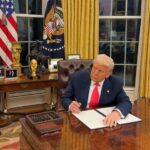In a stunning turn of events, newly elected Canadian Prime Minister Mark Carney has surged in popularity among bettors on the prediction market, Polymarket, boosting his chances of winning the upcoming federal election. Carney, fresh from a leadership contest victory within the Liberal Party, is now seen as having a 49% likelihood of securing his position in the next election, a remarkable rise from just 26% a month ago. In contrast, Conservative leader Pierre Poilievre has seen his odds drop to 51% from a commanding 72% in February.
The next Canadian federal election is scheduled for October 20, 2025. However, political dynamics could shift dramatically before then. With the Liberal government currently in a minority position, a joint opposition vote against the government could trigger an early election. This scenario remains a distinct possibility as Parliament is set to resume after a prorogation period beginning March 24—a decision made by former Prime Minister Justin Trudeau amid his resignation plans.
The shifting political landscape comes as recent polling indicates a tighter race between the Liberals and Conservatives. According to Nanos Research, the Conservatives hold only a one-percentage-point edge over Carney’s team, down from a substantial 16-point lead just a month prior. Analysts attribute this significant change to heightened trade tensions with the U.S., alongside a growing preference for Carney’s extensive background in finance and central banking over his rival’s. This political recalibration stands in stark contrast to last year’s U.S. elections, where prediction markets displayed a consistent advantage for Republican candidates.
While the issue of cryptocurrency has been an active topic in various political conversations, it appears to be taking a backseat in the current Canadian campaign. Although Poilievre has previously made favorable remarks about blockchain and holds a Canadian-issued Bitcoin ETF, conversation around crypto remains limited, focusing primarily on trade matters. Carney, known for his skeptical views on cryptocurrency during his tenure as Governor of the Bank of England, has yet to address the subject in his role as the new Liberal leader.

Mark Carney’s Rise in Canadian Politics
Key points from the recent developments surrounding newly elected Prime Minister Mark Carney and his potential impact on Canadian politics:
- Leadership Change: Mark Carney has replaced Justin Trudeau as the leader of the Liberal Party.
- Election Odds: Carney’s chances of winning the next federal election have increased to 49%, while Conservative leader Pierre Poilievre’s chances have dropped to 51%.
- Upcoming Election Date: The next Canadian federal election is slated for October 20, 2025.
“Carney closing the gap against Poilievre on Polymarket – echoes what the polls are showing.”
- Possibility of Election Trigger: If the minority Liberal government loses a confidence vote after Parliament resumes on March 24, it could result in an early election.
- Poll Dynamics: Current polling shows the Conservatives only 1 percentage point ahead of the Liberals, a significant drop from a previously held 16-point lead.
- Public Opinion Shift: Observers attribute Carney’s improvement in odds and poll standings to his perceived business acumen and prior experience as a central banker.
“Canadians prefer Carney’s business sense and central bank experience over his opponent.”
- Comparison with U.S. Elections: The dynamics differ from the U.S. election scenario, where prediction markets often showed Trump leading his Democratic counterparts.
- Crypto Policy Uncertainty: While Poilievre expresses pro-crypto sentiments, Carney’s mixed views on cryptocurrency may affect its role in the campaign.
- Trade War Focus: The dominant campaign narrative currently revolves around economic issues, particularly trade, rather than cryptocurrency.
The changing political landscape, including Mark Carney’s leadership and perceptions of economic expertise, may influence voter sentiment and economic policies affecting everyday Canadians.
Mark Carney’s Rising Star: A Shift in Canada’s Political Landscape
The recent political developments surrounding Mark Carney’s elevation as Canada’s Prime Minister have sent shockwaves throughout the political arena, particularly as he flips the script on the forecast for the upcoming federal election. With his projected odds skyrocketing to 49% for the next election, Carney’s ascent becomes an interesting case study in the consequences of strategic political positioning amid fluctuating public sentiments and rival party dynamics.
Competitive Advantages: Carney’s extensive background in economics and finance resonates well with Canadian voters, especially during unstable trade relations with the U.S. Unlike his Conservative counterpart, Pierre Poilievre, whose initial lead has dwindled to just 1%, Carney’s familiarity with central banking constructs offers a sense of stability that many Canadians find reassuring. His recent surge in the betting markets is indicative not only of investor confidence but also of a hopeful electorate eager for change. The stark contrast in their trajectories paints Carney as a viable alternative who embodies fiscal cautiousness, thereby favoring a broader demographic dissatisfied with the status quo.
Competitive Disadvantages: However, Carney’s skepticism towards cryptocurrency could alienate a segment of the population that is leaning towards innovation and digital asset evolution. Poilievre is positioning himself as a champion of blockchain, which could attract the younger, tech-savvy voters who may otherwise back Carney for his traditional economic expertise. Additionally, Carney inherits a Liberal government that could be rightly perceived as fragile, given its minority status, making him vulnerable if the opposition leverages this instability effectively.
The upcoming federal election on October 20, 2025 is poised to be an intense battle, especially with the potential for a confidence vote that might trigger an early election. Carney’s campaign will need to tread carefully on issues that resonate beyond trade policies, ensuring he engages those among the electorate who prioritize progressive change, including those intrigued by the digital currency space.
Thus, while Carney’s renewed leadership represents a golden opportunity for the Liberal Party, it also poses challenges that could fracture support if not deftly navigated. The electorate’s split loyalties demonstrate the delicate balance required for securing a favorable outcome in an increasingly polarized political climate.
















